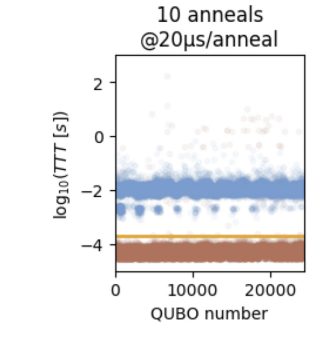 A new paper from LANL and D-Wave Systems looks at how quantum computer could be used for Machine Learning.
A new paper from LANL and D-Wave Systems looks at how quantum computer could be used for Machine Learning.
D-Wave quantum annealers represent a novel computational architecture and have attracted significant interest, but have been used for few real-world computations. Machine Learning has been identified as an area where quantum annealing may be useful. Here, we show that the D-Wave 2X can be effectively used as part of an unsupervised machine learning method. This method can be used to analyze large datasets.
The D-Wave only limits the number of features that can be extracted from the dataset. We apply this method to learn the features from a set of facial images.
Given the remarkable performance improvements over many generations of classical microprocessors [7] and the impressive algorithmic improvements in mixed-integer programming tools like Gurobi [29] over the past several decades, it is surprising that D-Wave’s third generation hardware and our straightforward algorithm can be competitive at all. In the series of four chips that D-Wave has released, the number of qubits has approximately doubled from one generation to the next while the number of couplers per qubit has remained essentially unchanged. D-Wave’s fifth generation chip is expected to at least double the number of couplers per qubit [30, 3]. If this comes to fruition, it would likely have a significant, positive impact on the performance of the DWave for the problems we consider here.
Download the PDF: Nonnegative/binary Matrix Factorization with a D-Wave Quantum Annealer



